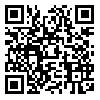Volume 29, Issue 4 (March 2022)
J Birjand Univ Med Sci. 2022, 29(4): 397-401 |
Back to browse issues page
1- Department of Health Services Management, School of Management and Medical Information Sciences, Isfahan University of Medical Sciences, Isfahan, Iran
2- Health Management and Economics Research Center, Department of Health Services Management, School of Management and Medical Information Sciences, Isfahan University of Medical Sciences, Isfahan, Iran , ferdosi1348@yahoo.com
2- Health Management and Economics Research Center, Department of Health Services Management, School of Management and Medical Information Sciences, Isfahan University of Medical Sciences, Isfahan, Iran , ferdosi1348@yahoo.com
Abstract: (750 Views)
Among the types of migration, the migration of expert human resources is one of the most challenging for the immigrant sender countries. With the outbreak of COVID-19 worldwide, the importance of medical staff and the need for providing sufficient human resources in the healthcare section appeared more prominent. COVID-19 along with the existing economic challenges has intensified the process of medical staff migration in Iran, one of the immigrant sender countries. Investment in the development of expert human resources requires the allocation of large material resources, and wasting the mentioned resources also means giving these experts to the destination countries for free. Identification of different dimensions and the root causes of the migration of expert human resources helps policymakers in making effective decisions. In this study, economic-occupational factors, socio-cultural factors, and obstacles to continuing education were identified as the main factors of medical staff migration.
Type of Study: Letter to Editor |
Subject:
Health Policy
Received: 2023/02/1 | Accepted: 2023/02/25 | ePublished ahead of print: 2023/03/14 | ePublished: 2023/03/6
Received: 2023/02/1 | Accepted: 2023/02/25 | ePublished ahead of print: 2023/03/14 | ePublished: 2023/03/6
| Rights and permissions | |
 |
This work is licensed under a Creative Commons Attribution-NonCommercial 4.0 International License. |


